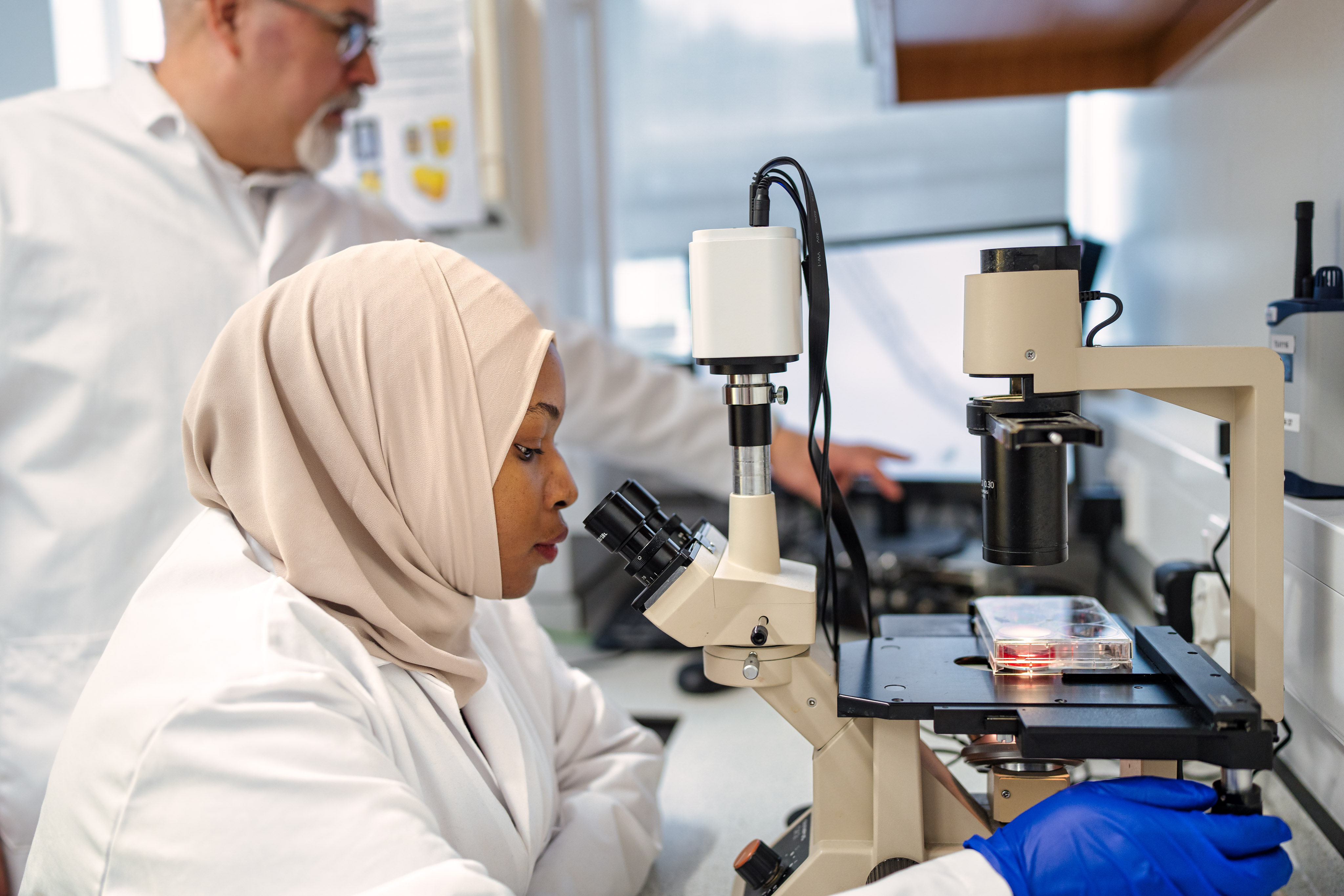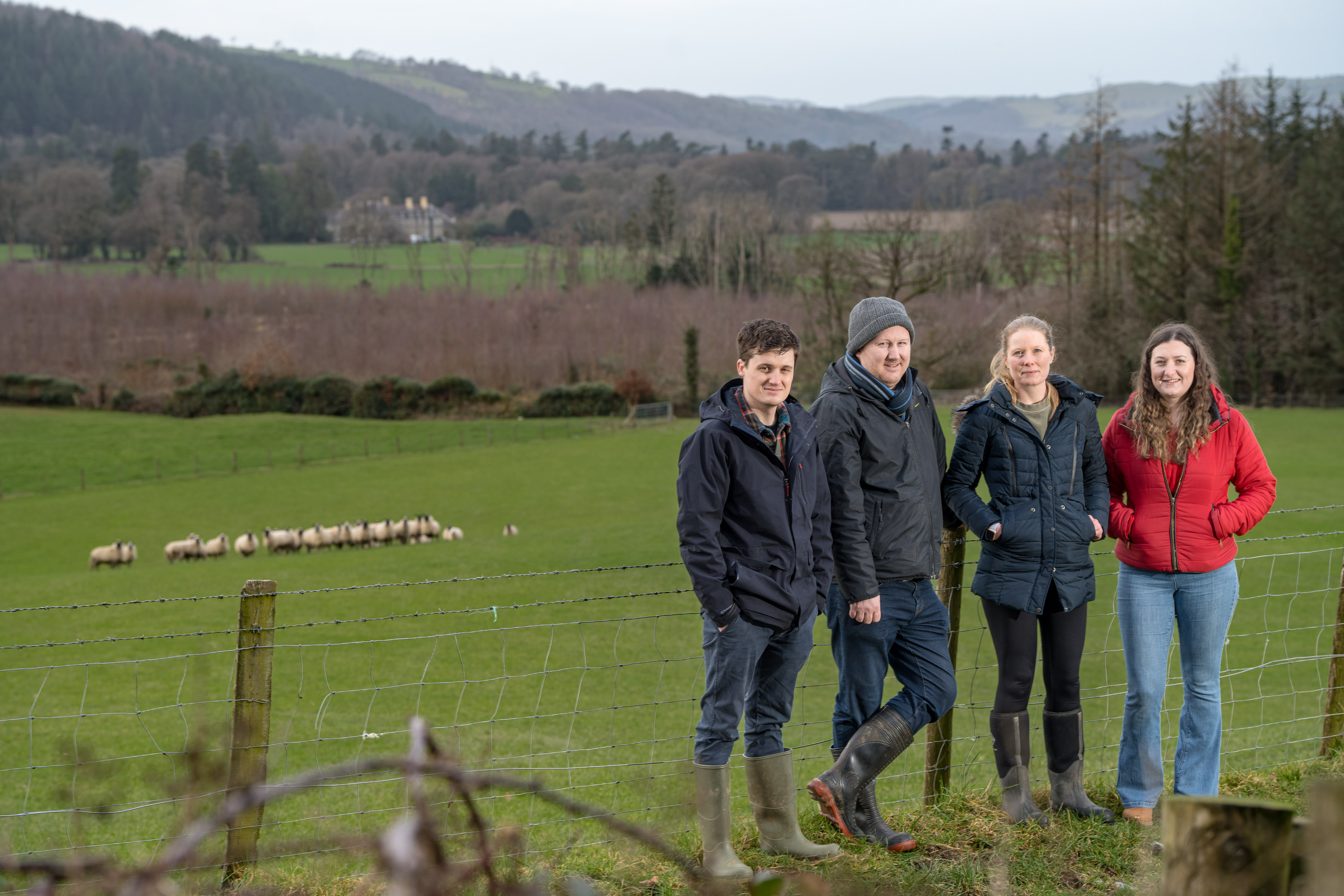Queen's Anniversary Prize - Pioneering Parasitology Research

Protecting people, animals and economies from harmful parasitic worms
Parasitic worms cause some of the most disfiguring, debilitating and chronic infectious diseases of human and animal populations across the globe. They kill thousands of people and animals annually as well as lead to the suffering of millions more and contribute to the development of chronic disorders such as cancer. In terms of food and crop security, parasitic worms also threaten our ability to feed the planet’s ever-growing population and create substantial economic losses in every food-producing nation on the planet.
In a neglected field of research, scientists here at Aberystwyth University have devoted themselves to the study of a particular group of parasitic worms – parasitic flatworms. By merging the expertise of both agricultural and biological parasitologists, this University has built an international reputation as one of only a handful of centres in the world dedicated to combatting the devastating impact of parasitic flatworms on people, animals and economies.
The impact of their work has been recognised with a Queen’s Anniversary Prize, the highest Honour in education in the United Kingdom awarded to universities and colleges for outstanding work which demonstrates excellence, innovation and benefit to the wider world.
Building on the past
Parasitology has been studied at Aberystwyth University for more than a century, to the days of Professor Gwendolen Rees who was the first woman in Wales to be elected a Fellow of the Royal Society.
Building on past research and innovation, our scientists have advanced global understandings of fundamental flatworm biology. They have analysed the complex lifecycles and host interactions of these parasites to an unprecedented level of detail so that vulnerabilities can be identified and targeted by new vaccines or drugs. They have also pioneered the development of innovative methodologies to influence and advance new vaccine, diagnostic and drug discovery pipelines as well as created screening, detection and medical treatment processes to save lives and safeguard food production.
Crucially, our scientists widely share the findings of their transformational work with academic and industry partners for the improvement of global health and the benefit of society. They are a world leader in developing sophisticated molecular methods for detecting parasitic flatworms on pasture, driving the refinement of farm management practices at ground level and revolutionising approaches to detect one of livestock industry’s most endemic diseases. Working with others, including external partners from industry as well as academia, patents based on the University’s Intellectual Property are pending in several continents while a newly-created compound class is currently in preclinical efficacy trials.
They have additionally harnessed Artificial Intelligence (AI) to rapidly accelerate the identification of new compounds as part of the UK’s most sophisticated and high-throughput anthelmintic drug discovery platform focused on parasitic flatworms.
Schistosomiasis and Fasciolosis

The blood flukes which cause the debilitating schistosomiasis disease are studied in the laboratories of our Department of Life Sciences.
Due to their significant economic and health burdens, the two predominant parasitic flatworm species targeted by this University’s scientists are the blood fluke Schistosoma mansoni and the liver fluke Fasciola hepatica.
S. mansoni causes schistosomiasis, a neglected tropical disease usually spread through contact with contaminated fresh water and mainly affecting Africa, Asia and South America, though recently imported into Southern Europe. It kills thousands of people and infects more than 200 million individuals every year, causing chronic long-term symptoms which prevent people from living productive lives.
Liver Fluke

Some of the researchers and technicians from the University’s Department of Life Sciences work closely with farmers as part of their work on controlling parasitic flatworms which cause liver and rumen fluke in livestock.
Globally, the F. hepatica parasite infects more than 300 million cattle and 250 million sheep resulting in the disease fasciolosis and global agricultural productivity losses of over £2.5 billion per year. In the UK alone, fasciolosis costs the cattle farming industry approximately £23 million annually.
For both diseases, treatment predominantly relies on a single drug - praziquantel for schistosomiasis and triclabendazole for fasciolosis. Worryingly, evidence that resistance to both these drugs is growing, which substantially hinders sustainable control. Furthermore, there is no current vaccine for either disease, and detection of both flatworm species has been reliant on insensitive, non-specific, time-consuming technologies.
Employing innovative techniques, our scientists were the first to deconstruct the make-up of these parasitic flatworms at a molecular level and use this ground-breaking knowledge to identify vulnerabilities, which can be targeted by new vaccines or drugs. They have also pioneered new methodologies for sensitive detection of these parasites in the environment, now employed in the refinement of farm management practices and strategies to prevent livestock from becoming infected. Much of this work to date has been undertaken on farms in Wales, directly benefitting farmers and the health of their animals and businesses, with the aim of rolling out internationally.
Knowledge Exchange
In the UK over the past 15 years, knowledge exchange and continuing professional development activities have been delivered to over 1,300 vets, farmers and rural sector participants and this outreach work continues as part of a wider programme to lessen the harmful effects of parasitic flatworms in animals.
In their pursuit of new treatments for the tropical disease Schistosomiasis, which affects so many people every year, our scientists created and currently maintain the longest-established lifecycle of the S. mansoni parasite in the UK. Through this and other work, they have built a reputation as a significant provider of high-quality parasite material to other scientific and academic institutions enabling existing research, teaching and diagnostic activities to be maintained more widely across the UK and beyond.
The principles of knowledge exchange and shared expertise for wider benefit are embedded within the Barrett Centre for Helminth Control and are further demonstrated in the continuous education and outreach work undertaken both in the UK and globally by our parasitologists.
Photo Gallery
This gallery of photos shows some of our parasitology teams at work - either in their laboratories on Pneglais campus or out in the field on agricultural land:










































Additional Information
If you’d like to find out more about the work of our parasitologists, please use the links below or email drbi@aber.ac.uk.
